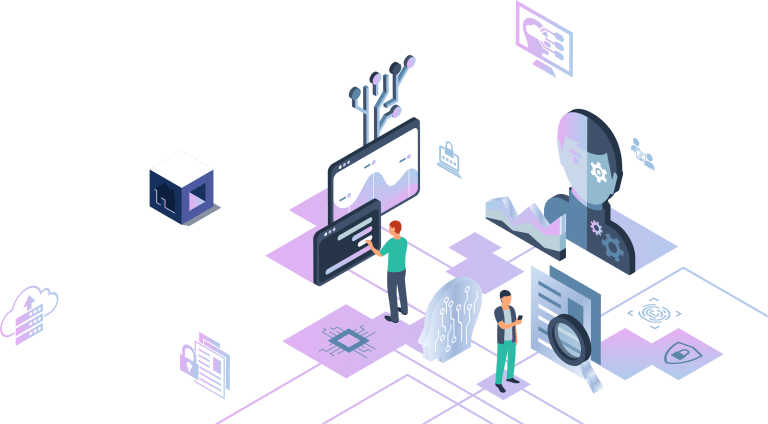The Convergence of AI and Web3
How Web3 and Artificial Intelligence Combined can unlock Exponential Value
By Thomas Winkler

Recently we have seen simultaneous breakthroughs in several exponential technologies. Two standouts, Artificial Intelligence (AI) and Web3 (based on blockchain), are regarded as primary innovation platforms.
With the popularity of Generative Artificial Intelligence (GenAI) models, especially ChatGPT, AI has recently come into the public limelight. What might be easy to miss is that combining these two revolutionary technologies – Web3 and AI – could add exponential value to both sides. Both are part of a mega-trend towards digitalization, with AI digitizing knowledge and reasoning and with Web3 digitizing trust and ownership.
In this article, we will explore the exciting possibilities and synergistic benefits that emerge from the convergence of AI and Web3, highlighting the potential for different participants in the ecosystem.
Where can individual developers, small teams and communities best Combine Web3 and AI?
Opportunities for Creators and Communities
AI may seem to be the domain of large corporations with vast resources for data accumulation and to pay for the immensely compute-intensive model training. However, there is a counter-argument to be made, as the rapid pace of innovation and the open-source AI model movement break down existing barriers and create new opportunities for smaller entities, ranging from individual developers to startups. So, what opportunities await creators and communities?

Harnessing Low-Code and Full-Code with AI Coding Assistants
Intuitive Low-Code/No-Code platforms has democratized application development, including Web3 decentralized applications (dApps), by making it accessible to a broader range of creators, including those without extensive software engineering backgrounds. However, for more advanced functionality, coding skills are often still necessary. Enter AI-based coding assistants, also known as copilots. These assistants enable non-technical creators to describe desired functionality and behavior in plain language, automatically generating the corresponding code. This is especially powerful in Web3 because the required knowledge is a mix of Web2 and Web3 constructs. Mastering both worlds, like Smart Contracts and the latest Web2 cloud ideas, is a scarce skill set.
Crowd-Sourcing Data with Complete Ownership and Provenance
Large language models (LLMs) have traditionally been trained on publicly available data sources such as Wikipedia and internet scrapes. However, including additional private and proprietary data can fine-tune and optimize models for specific contexts.
Web3 presents an opportunity to incentivize crowd-sourcing of valuable data, letting owners benefit from sharing their personal or proprietary information. This approach also ensures traceability and provenance of data and, when combined with privacy-preserving Web3 technologies, balances over-sharing and privacy.
Crowd-funding Model Creation with Tokenized Ownership
The resources required to train large language models are beyond the means of most individuals or small organizations. However, communities can pool their resources through crowd-funding techniques, providing opportunities for fractional ownership of models via tokenization. This opens possibilities for larger endeavors and lets individuals benefit from their investments.
Monetizing NFTs based on Generative AI and DeFi
Non-Fungible Tokens (NFTs) can incorporate individual artwork and generative art, enabling creators to monetize their creations. Musicians, for example, can sell access to their music while rewarding fans with unique NFTs that unlock exclusive experiences.
Combining Micro-Tasks and Micro-Rewards
Human interactions play a valuable role in enhancing AI, particularly through reinforcement learning from human feedback (RLHF). Web3 helps with micro-rewards as tokens, providing an incentive for individuals to perform micro-tasks that contribute to AI development and continuous improvement.
WHERE CAN Enterprises BEST Combine AI and Web3?
Opportunities for Enterprises
Enterprises are keen to incorporate AI into existing business processes and leverage their unique data and interfaces. The combination of Web3 and AI brings more value to enterprises in several ways.

Creating Trust and Accountability around AI Decisions
Enterprises can increase trust and transparency by using Web3 to record immutable records of all inputs and outputs in an AI-driven transaction. For example, if the provenance of the underlying data and model is recorded on a blockchain, and if all inputs (such as the original model used, additional fine-tuning and embeddings, prompts) and outputs (results and reasoning for the results) are recorded on-chain, this can trace a decision back to its constituents, to support explainability, and to protect against infiltration of unwanted content. Additionally, Web3 privacy technologies like zero-knowledge proofs can balance transparency and privacy.
Establishing Reward Systems for Sharing Personal or Proprietary Data
When consumers know that sharing personal data can benefit them in privacy-preserving way, enterprises gain better access to valuable data. Similarly, if creators are credited for the value derived from their contributions to AI models, win-win opportunities arise for both creators and enterprises leveraging that data downstream.
Building Personalized Relationships with Consumers
Even in an increasingly privacy-focused world, Web3 constructs like wallets and decentralized sovereign identities can help with the creation of genuine relationships between enterprises and consumers. AI models can power deeply customized and personalized interactions, by analyzing rich on-chain Web3 data and using the personal data consumers are incentivized to share.
How can Platforms enable the convergence of Web3 and AI?
Opportunities for Platforms
Platforms such as zbyte, the first decentralized platform enabled by AI, play a crucial role in helping with the interactions mentioned above and scaling related network effects. These platforms can seize various opportunities to enable such outcomes:

Empowering Creators with Coding Superpowers on top of Low-Code/No-Code
Platforms that offer Low-Code/No-Code creator tools have already removed barriers and increased efficiency. However, advanced functionality often still requires coding skills. By incorporating AI copilots and assistants, platforms can level the playing field for even more creators. AI assistants can handle tasks like customizing smart contracts, configuring connectors and API calls to Web2 services, and adding application logic. Conversational user interfaces can enhance the user experience of dApps.
Providing Pre-Integrated Access to Web2, Web3, and AI Systems
By simplifying connections to a range of AI, Web2, and Web3 systems through pre-made connectors and integrations, platforms can unleash the creativity of creators to build solutions in this space.
Helping with Payment and Monetization for Multiple Autonomous AI Systems and Bots
As more specialized AI models emerge, applications may interact with multiple models simultaneously, and even set them up to perform transactions between each other autonomously. Platforms can create unified tokenized access to these models, helping with seamless value exchange between participants. For example, in an automated Internet of Things (IoT) environment, an application could dynamically invoke specialized AI models and leverage decentralized resources. Web3 tokens enable fast transactions and seamless value exchange between participants.
Providing Infrastructure for Digital Trust
Web3’s immutable records can establish trust in AI models, reduce fraud risks, and enable subsequent investigations for explainability. Platforms can play a pivotal role by providing the infrastructure for recording tamper-proof AI inputs, models, training parameters, and outputs, while integrating decentralized identity and privacy systems.
Decentralizing AI
Crowd-sourcing of data to train AI models and crowd-funding the creation of large models is a new opportunity for creators and communities. Web3 and DeFi are ideal technologies to fuel this and for sharing the economic benefits. Applying the ethos, technology enablers, and governance principles of Web3 would also lead to more decentralization of AI technologies instead of repeating the Web 2.0 model, where a few dominant players controlled all data and assets.
Building enablers for this approach should be a priority for modern Web3 platforms.
Convergence of AI and Web3
Conclusion
While AI enjoys considerable attention, it is essential not to overlook the significance of Web3 as another foundational pillar of exponential technology. The fusion of AI and Web3 holds tremendous potential and offers various use cases and opportunities for different ecosystem participants, from creators to enterprises to platforms
Further Reading
Start your Web3 journey today with zbyte.
